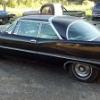-
Posts
273 -
Joined
-
Last visited
-
Days Won
2

jeffsunzeri replied to rwood64083's topic in Mopar Flathead Truck Forum

jeffsunzeri replied to Dozerman51's topic in Mopar Flathead Truck Forum

jeffsunzeri replied to PT81Jan's topic in Mopar Flathead Truck Forum
We have placed cookies on your device to help make this website better. You can adjust your cookie settings, otherwise we'll assume you're okay to continue.

